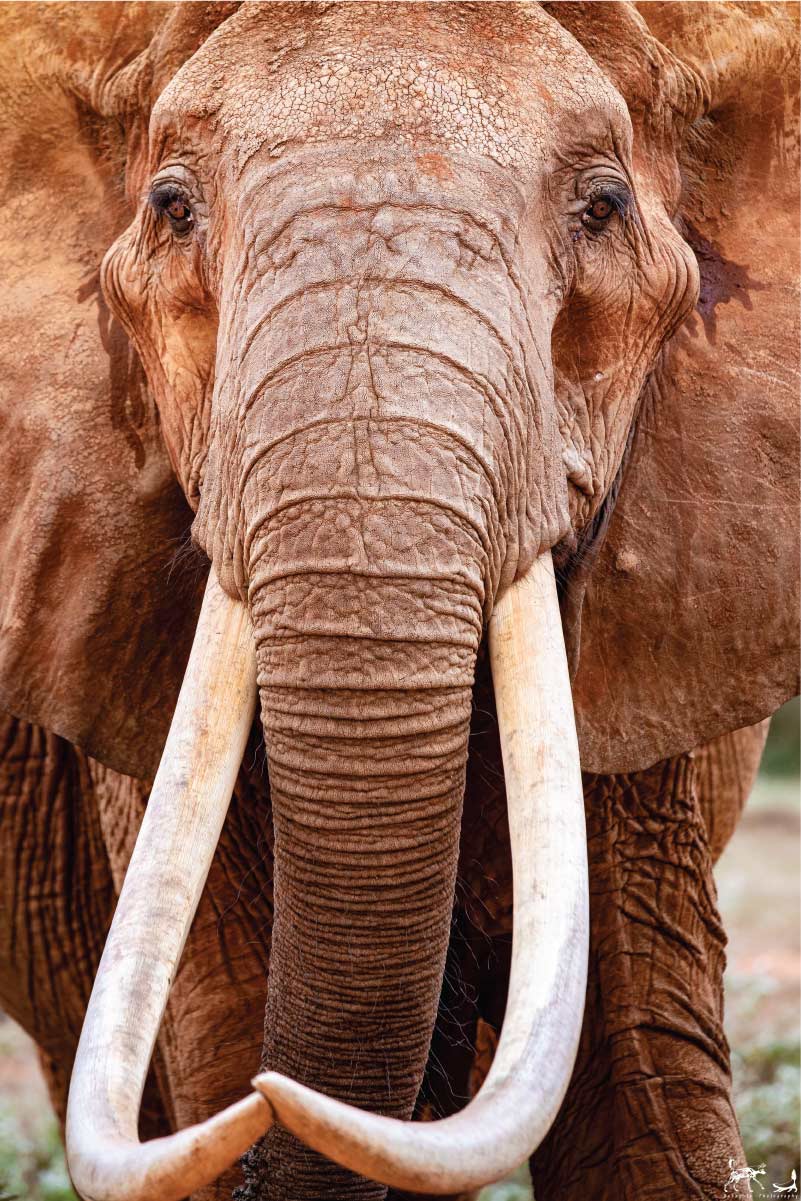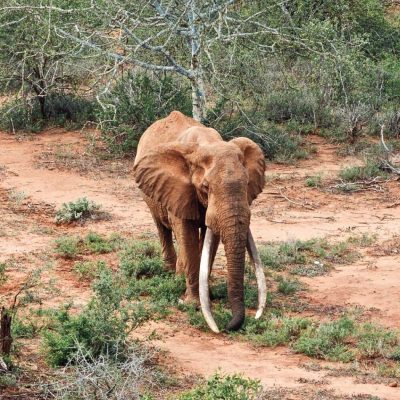Extra Protection for the Last Giants of the Elephant World:
Tsavo Trust’s ‘Big Tusker Project’ working in support of KWS
Working in close collaboration with the Kenya Wildlife Service (KWS) and alongside research and conservation partners including Save The Elephants, Tsavo Trust monitors the elephant populations of Tsavo, with a specific emphasis on the large ‘Tuskers’.
The term “Big Tusker” refers to an elephant with tusks so large they scrape the floor. Unfortunately, the opportunities for witnessing a big tusker in its natural habitat are slim. As of today, there are approximately 25 individuals left in the world, most of which reside in the Tsavo Conservation Area. It is vital that we make every effort to protect what is arguably the last viable gene pool of “Big Tuskers” remaining.
There are a number of reasons why “Big Tuskers” are so rare. Firstly, elephants with tusks that large are a natural rarity which only adds to the mysticism surrounding their majesty. Secondly, these massive elephants are under constant threat from poachers. In parts of the Far East, 1kg of ivory sells for several thousand dollars and a “Big Tusker” can have tusks that weigh over 50kg each.
At Tsavo Trust, working in conjunction with KWS and partners, we are faced with the momentous task of trying to protect these “Big Tuskers” from the ever-present threat of poaching, whilst also allowing them the freedom to roam in the vastness of Tsavo that is so integral to the life of an elephant.
A future where there are no “Big Tuskers” in Tsavo is not worth thinking about. Tsavo is famous for its “Big Tuskers”. The presence of these majestic animals brings huge numbers of tourists to the Park every year and that income is vital to further conservation efforts and supporting local communities. In Kenya, the co-dependence between humans and wild animals is strong but has its challenges and this is something Tsavo Trust is energetically trying to address through its Community Conservancy Program.
The vast and varied wilderness of Tsavo provides great potential for wildlife growth. However, at the same time this creates a huge challenge for effective wildlife conservation. Without the use of aerial operations, it would be impossible to monitor this massive, largely roadless, area of land. Annual running costs for this kind of activity is high and therefore it is essential to seek funding support in order to protect these last remaining “Tuskers”. By guarding them, we are effectively providing a layer of security for all other wildlife within their range.
This monitoring is carried out by Tsavo Trust’s Aerial Unit providing regular “eyes in the sky” working in tandem with ground protection teams who provide “eyes and ears” on the ground. Also, in total partnership with the KWS Research and Monitoring Department, Tsavo Trust has deployed the Tembo 2 and Tembo 4 mobile ground teams, which carry out daily monitoring of big Tuskers in Tsavo East National Park (TENP) and Tsavo West National Park (TWNP), as well as an array of many varying activities under this department, directed by KWS, to include endangered species monitoring such as Hirola, Grevy’s Zebra and predator monitoring just to mention a few.
The rust-red elephants of Tsavo…
At over twice the size of Israel, the greater Tsavo Conservation Area is a vast, wild area of awe-inspiring natural beauty and incredible biodiversity. The area boasts Kenya’s single largest population of elephants – famously red in colour due to Tsavo’s rusty earth tones – numbering approximately 15,000 animals today. This might sound like a good many elephants – but not when you consider that in the late 1960s there used to be 35,000 in Tsavo. Among the surviving population is arguably the world’s last viable gene pool of elephants carrying exceptionally large ivory.
In full collaboration with KWS and other conservation partners, Tsavo Trust has played a vital role in reducing elephant and bushmeat poaching by at least 70% in recent years (9 years from 2013 to 2021), where joint Tsavo Trust / KWS activities have resulted in 6,302 hours flown covering 734,750 kilometers; made 860 arrests; recovered 5,880 snares; 741 elephant tusks; located 663 elephant carcasses (fresh and recent); and recovered 4,627 kilograms of bushmeat (wet and dry) just to mention a few notable statistics.







